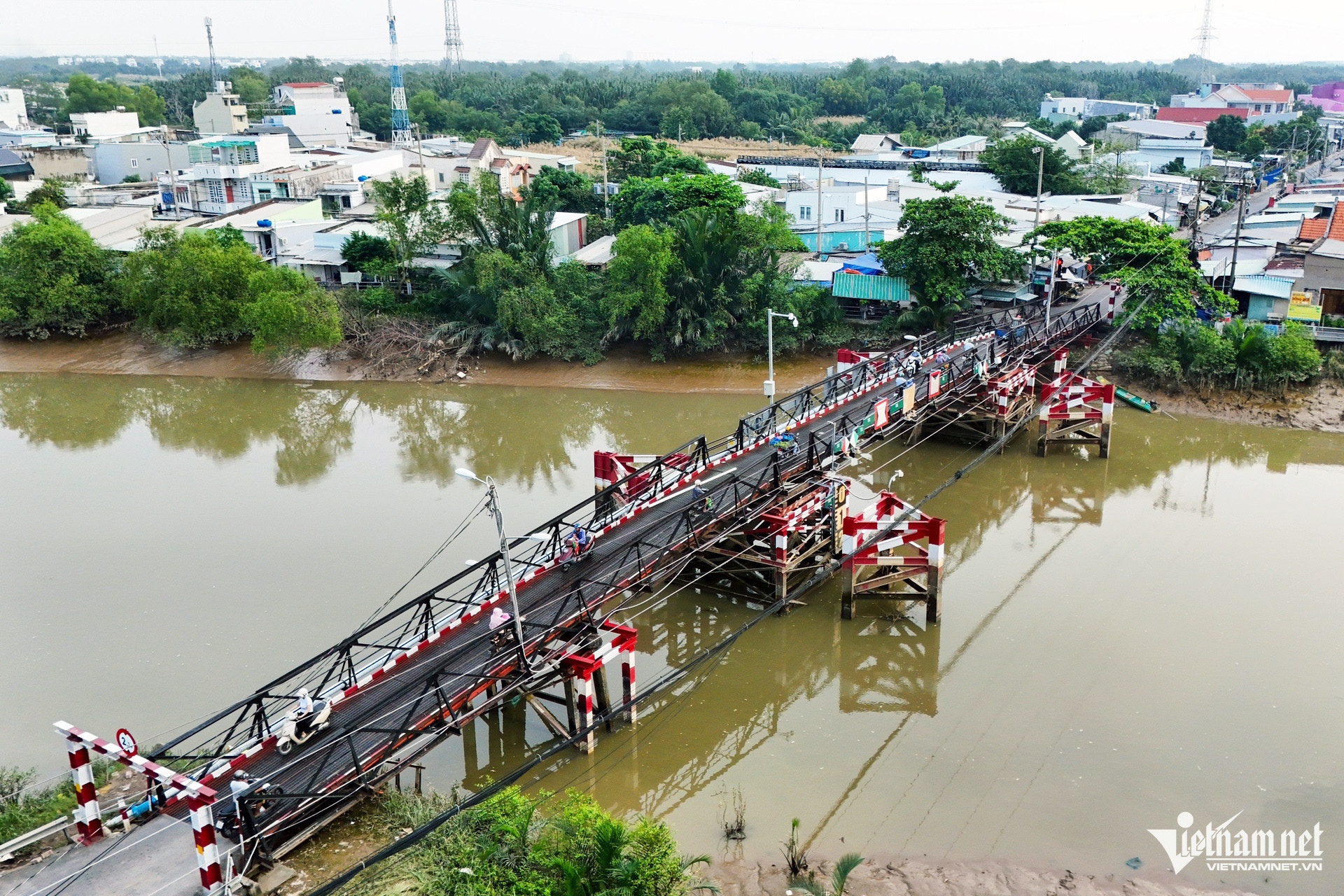According to the HCMC Department of Transport, the city has approximately 1,123 bridges, 17 of which are aging steel structures dating back to before 1975. These include notable bridges such as Mong Bridge (District 1), Tan Thuan 1 Bridge (District 4), Phu Dinh Bridge (District 6), Rach Dia and Phuoc Long Bridges (District 7), and several others in District 8, Binh Thanh District, Thu Duc City, and Nha Be District.

While these bridges are considered symbols tied to the city’s historical and urban development, their advanced age has led to significant structural wear, raising concerns about safety and contributing to traffic congestion.
To address these challenges, the Department of Transport has conducted assessments to evaluate the operational capacity and load-bearing ability of these bridges. As of now, four steel bridges have been replaced: Kinh Thanh Da Bridge, Rach Chiec Bridge, Long Kieng Bridge, and Phu Long Bridge.
Construction is underway for new replacements at Rach Dia and Phuoc Long Bridges, while projects are being planned for Rach Cat, Rach Tom, and Rach Doi Bridges.
In addition to replacing aging steel bridges, HCMC has built 10 new steel overpasses at key intersections over recent years to alleviate congestion. These include overpasses at Hang Xanh and Thu Duc Intersections, Hoang Van Thu – Cong Hoa, Cong Hoa – Hoang Hoa Tham, Pham Van Dong – Nguyen Thai Son, Nguyen Kiem – Nguyen Oanh – Quang Trung Roundabout, Cay Go Roundabout, and Ba Thang Hai – Nguyen Tri Phuong Intersection.
Temporary structures like the An Phu Dong steel bridge (Go Vap District) and the Rach Gia steel bridge (District 12) have also been introduced to address traffic flow issues.
The city plans to construct additional steel overpasses at the Bon Xa Intersection and the Vo Thi Sau – Cach Mang Thang Tam – Ba Thang Hai Roundabout to further reduce congestion.
Tuan Kiet